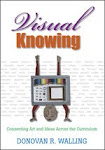 |
| Thomas Merton |
Merton and Waugh,
by Mary Frances Cody (Paraclete Press, 2015), recounts a relatively brief
period from August 2, 1948, to February 25, 1952, during which the American
author and monk Thomas Merton engaged in correspondence with the British
novelist Evelyn Waugh. This slim volume, subtitled A Monk, a Crusty Old Man, and The Seven Storey Mountain, was a gift
from my partner/husband Sam on the occasion of the fifteenth anniversary of our
relationship, which coincidentally was our wedding day. I finished reading the
book exactly three months later, not that it took that long to read the 155
pages but because I read it in digestible bits, allowing ample time to ponder
this remarkable period of correspondence between these two interesting men whose
lives were perhaps even more intriguing than their writing.
The correspondence between Merton and Waugh began when Waugh
was asked by Merton’s American publisher to edit the
monk’s The Seven Storey Mountain manuscript for
a British edition. Evelyn Waugh (1903-1966) was approaching middle age in 1948
and had recently become known in the United States following the publication
some two years earlier of Brideshead
Revisited, his novel of elicit love and divine grace. The manuscript of The Seven Storey Mountain, written by a
Trappist monk living in obscurity in a rural Kentucky monastery, arrived
unsolicited, sent by Merton’s editor Robert Giroux at Harcourt Brace, the New
York publishing company.
 |
| Evelyn Waugh |
Thomas Merton (1915-1968) was not a novice writer at the time,
although he was still somewhat new to monastic life, having been accepted at
the Abbey of Gethsemani near Bardstown, Kentucky, as a novice monk in the
spring of 1942. Early on it was recognized that Merton’s strength lay in his
abilities as a writer, and he was set to work producing texts of various sorts
as a means of bringing income to the monastery. The Seven Storey Mountain, written when Merton was in his early
thirties, is autobiographical and unarguably his best-known book. The title
refers to the mountain of Purgatory in Dante’s Divine Comedy.
Evelyn Waugh was not the only person Giroux approached to
edit the work. Three others received unsolicited manuscripts: Graham Greene,
Clare Booth Luce, and Bishop Fulton J. Sheen. But it was Waugh, who wasn’t
expected to respond, who got the nod. Waugh’s endorsement was selected for the
cover of the first edition: “I regard this as a book which may well prove to be
of permanent interest in the history of religious experience. No one can afford
to neglect this clear account of a complex religious process.” And so it has
proven.
Cody has done a masterful job of parsing the two writers’
thoughts and feelings over the course of their exchanges. I suspect most
readers will believe, as I do, that in peering into the letters these men
exchanged they have been grant privileged access to a moment in time when the
lives of these two writers intersected.








